by Holly Johnson, University of Cincinnati, Cincinnati, OH
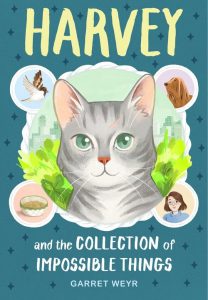 As I noted earlier this month, an eco-cosmopolitan perspective is one way to address environmental issues, but it is an equally great way to explore the interconnectedness of all inhabitants of the planet. The definition I used was Heise’s (2008) in which she asserts that eco-cosmopolitanism is an “attempt to envision individuals and groups as part of planetary ‘imagined communities’ of both human and nonhuman kinds” (p. 61). Exploring ways in which humans are interconnected with other inhabitants of the earth has often been highlighted through conflict, specifically self against nature, which is an interesting perspective to take since that stance suggests that humans are not part of nature. What a theme to take on with secondary students! But for this blog entry, I want to highlight the connection between humans and two cats, Haven and Harvey. Both these cats give a fascinating entrée into “imagined communities” of being, in Harvey’s case, untamed or wild. In other words, feral. And for Haven, she must confront the outside world as she attempts to save her human companion.
As I noted earlier this month, an eco-cosmopolitan perspective is one way to address environmental issues, but it is an equally great way to explore the interconnectedness of all inhabitants of the planet. The definition I used was Heise’s (2008) in which she asserts that eco-cosmopolitanism is an “attempt to envision individuals and groups as part of planetary ‘imagined communities’ of both human and nonhuman kinds” (p. 61). Exploring ways in which humans are interconnected with other inhabitants of the earth has often been highlighted through conflict, specifically self against nature, which is an interesting perspective to take since that stance suggests that humans are not part of nature. What a theme to take on with secondary students! But for this blog entry, I want to highlight the connection between humans and two cats, Haven and Harvey. Both these cats give a fascinating entrée into “imagined communities” of being, in Harvey’s case, untamed or wild. In other words, feral. And for Haven, she must confront the outside world as she attempts to save her human companion.
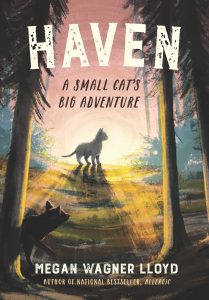 I am partial to these two new books for young readers: Haven: A Small Cat’s Big Adventure (2022) by Megan Wagner Lloyd, and Harvey and the Collection of Impossible Things (2022) by Garret Weyr probably because I was adopted by Sissy, once by a feral cat, who decided my home was her home, and lived with me for 17 years. A story quite similar to how Haven and Ma Millie came together I would think. Then in 2019, I adopted Pete, a colony cat who was given a chance to be adopted by a “catch-neuter-release” agency when he decided he might just want to give humans a chance. Cats can readily return or turn to a feral state if abandoned by a human or never established connection with humans at a young age. Pete’s behavior suggests that he was abandoned by the first human family he knew, but was able to find a colony in which to live, so upon encountering humans a second time, he thought he’d try his luck again. I hope I won’t disappoint him. It takes a lot of patience to gain the trust of a cat who is shy of humans, but one I found especially rewarding. So, forgive the partiality as I strongly endorse both these books, which will give readers a perspective on what it means to be a cat and the process in which a cat might come to trust and love a human.
I am partial to these two new books for young readers: Haven: A Small Cat’s Big Adventure (2022) by Megan Wagner Lloyd, and Harvey and the Collection of Impossible Things (2022) by Garret Weyr probably because I was adopted by Sissy, once by a feral cat, who decided my home was her home, and lived with me for 17 years. A story quite similar to how Haven and Ma Millie came together I would think. Then in 2019, I adopted Pete, a colony cat who was given a chance to be adopted by a “catch-neuter-release” agency when he decided he might just want to give humans a chance. Cats can readily return or turn to a feral state if abandoned by a human or never established connection with humans at a young age. Pete’s behavior suggests that he was abandoned by the first human family he knew, but was able to find a colony in which to live, so upon encountering humans a second time, he thought he’d try his luck again. I hope I won’t disappoint him. It takes a lot of patience to gain the trust of a cat who is shy of humans, but one I found especially rewarding. So, forgive the partiality as I strongly endorse both these books, which will give readers a perspective on what it means to be a cat and the process in which a cat might come to trust and love a human.
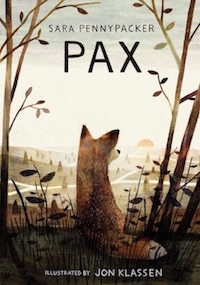 Feral cats are often considered pests by a majority of people because of their proliferation (if unchecked), and their predatory natures. For Harvey, in Harvey and the Collection of Impossible Things (Weyr, 2022), it’s a dangerous world. He is not the most courageous cat, and fighting for food is something he would rather not do, but to survive, he has to know where food can be found, and at what time, so as not to encounter other survivalists as they, too, want to eat. Harvey’s narration will give readers a sense of how homeless cats live, eat, and perhaps even make decisions about who and what to trust. Harvey brings into sharp relief the reality of feral cats who are often mistreated by human animals as well as other mammals in their contested territories. This book is a sweet story that might just have readers reconsidering what might benefit the “pests” they so often see on the street.
Feral cats are often considered pests by a majority of people because of their proliferation (if unchecked), and their predatory natures. For Harvey, in Harvey and the Collection of Impossible Things (Weyr, 2022), it’s a dangerous world. He is not the most courageous cat, and fighting for food is something he would rather not do, but to survive, he has to know where food can be found, and at what time, so as not to encounter other survivalists as they, too, want to eat. Harvey’s narration will give readers a sense of how homeless cats live, eat, and perhaps even make decisions about who and what to trust. Harvey brings into sharp relief the reality of feral cats who are often mistreated by human animals as well as other mammals in their contested territories. This book is a sweet story that might just have readers reconsidering what might benefit the “pests” they so often see on the street.
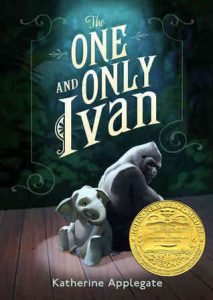 In Lloyd’s (2022) Haven, readers are introduced to a gentle cat who has found a place with a blue bowl from which to eat and a cozy lap upon which to recline, but when her human falls ill, Haven must find a way to sound the alarm to save Ma Millie! Haven embarks on a big adventure to find a neighbor to inform about Ma Millie’s condition and discovers what it’s like to be so small in such a big world. From Haven’s perspective readers gain an understanding of how she sees humans, the world, and her place within it. Not a bad lesson on relationships to consider when thinking about our own places in the world. Readers are also invited to envision the interconnectedness of those with whom we share this planet and the importance of hearing those voices. Readers will be delighted with both Harvey and Haven, and the opportunities to rethink how we might become advocates for them.
In Lloyd’s (2022) Haven, readers are introduced to a gentle cat who has found a place with a blue bowl from which to eat and a cozy lap upon which to recline, but when her human falls ill, Haven must find a way to sound the alarm to save Ma Millie! Haven embarks on a big adventure to find a neighbor to inform about Ma Millie’s condition and discovers what it’s like to be so small in such a big world. From Haven’s perspective readers gain an understanding of how she sees humans, the world, and her place within it. Not a bad lesson on relationships to consider when thinking about our own places in the world. Readers are also invited to envision the interconnectedness of those with whom we share this planet and the importance of hearing those voices. Readers will be delighted with both Harvey and Haven, and the opportunities to rethink how we might become advocates for them.
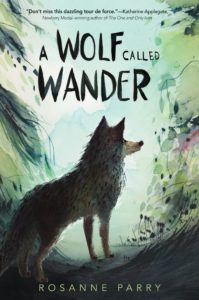 As I mentioned in my first posts earlier this month, it is that in children’s literature we so often get the perspective of a non-human animal or insect, and readers are delighted by the antics and/or adventures found within these marvelous narratives. Often humor is a big part of those narratives since, well, our “pets” can often make us laugh and they bring us joy. Harvey and Haven brought their humans joy but they also brought them closer to the reality that these cats created special and important spaces in their lives, and as such should be cared for and treated with a dignity that might best be afforded all living things, regardless of their human and other inhabitants of our world status.
As I mentioned in my first posts earlier this month, it is that in children’s literature we so often get the perspective of a non-human animal or insect, and readers are delighted by the antics and/or adventures found within these marvelous narratives. Often humor is a big part of those narratives since, well, our “pets” can often make us laugh and they bring us joy. Harvey and Haven brought their humans joy but they also brought them closer to the reality that these cats created special and important spaces in their lives, and as such should be cared for and treated with a dignity that might best be afforded all living things, regardless of their human and other inhabitants of our world status.
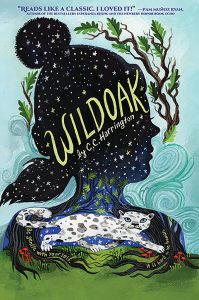 Other books for addressing the dignity of non-human animals and/or interconnections with human animals are Pax (Pennypacker, 2019), A Wolf Called Wander (Parry, 2021), The One and Only Ivan (Applegate, 2015), and Wildoak (Harrington, 2022).
Other books for addressing the dignity of non-human animals and/or interconnections with human animals are Pax (Pennypacker, 2019), A Wolf Called Wander (Parry, 2021), The One and Only Ivan (Applegate, 2015), and Wildoak (Harrington, 2022).
These books can readily start the discussion of eco-cosmopolitanism and the reality of the connection of all the inhabitants of the earth. Paired with books that utilize animals as narrators and protagonists, readers can begin to develop a greater empathy for all lifeforms on the earth. But most importantly, given so much new research on the sentience of all types of entities on the earth, these books open up the space to think about the rights all living things have as inhabitants of our planet.
Reference
Heise, Ursula K. (2008). Sense of Place and Sense of Planet: The Environmental Imagination of the Global. New York: Oxford UP.
WOW Currents is a space to talk about forward-thinking trends in global children’s and adolescent literature and how we use that literature with students. “Currents” is a play on words for trends and timeliness and the way we talk about social media. We encourage you to participate by leaving comments and sharing this post with your peers. To view our complete offerings of WOW Currents, please visit its archival stream.
